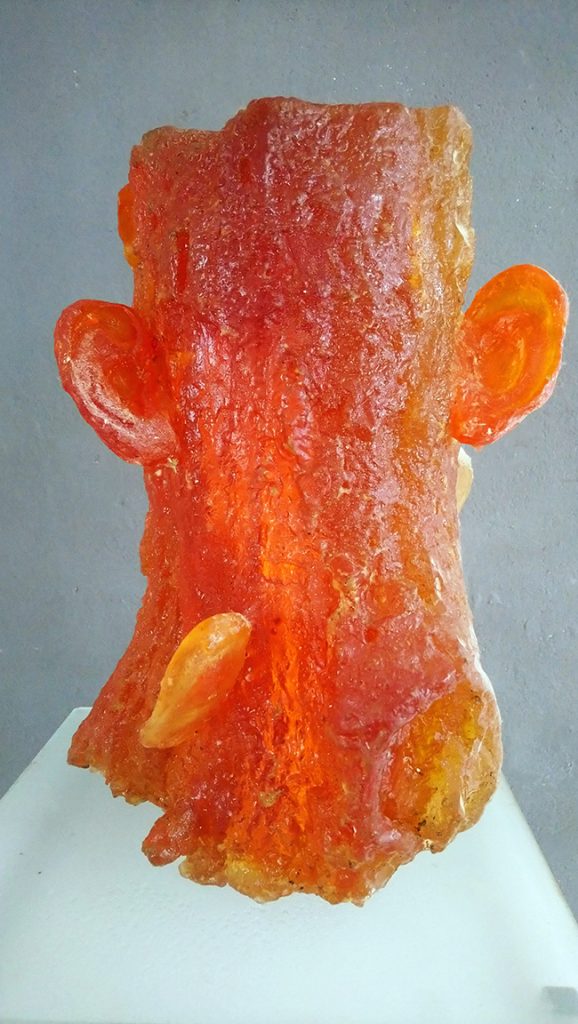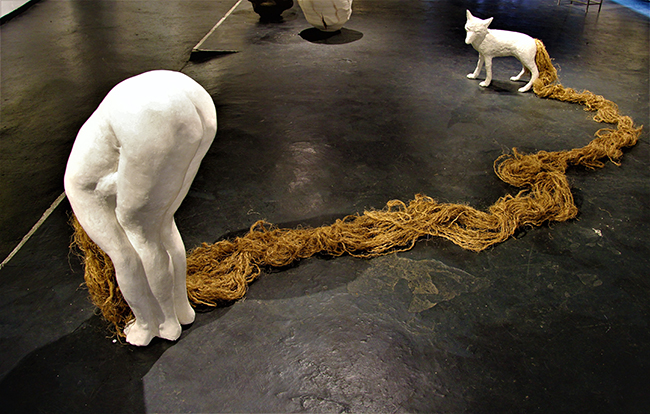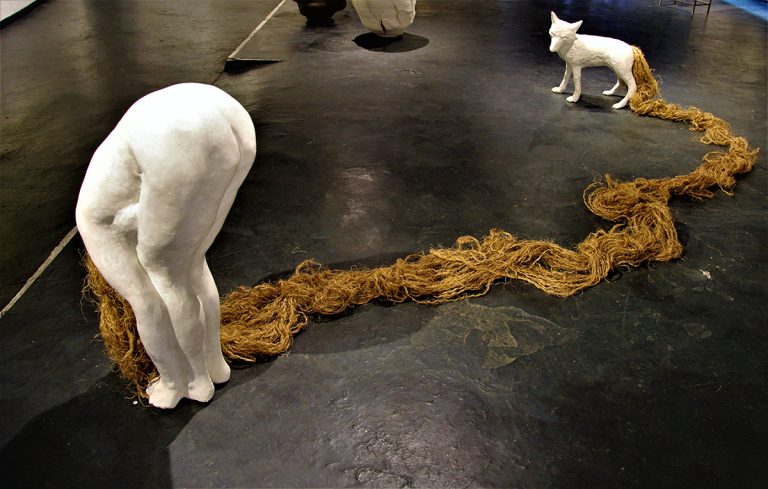Caroline Kampfraath, a Dutch artist, creates compelling 3D sculptures that combine a variety of materials to reflect her observations on life, nature, and human relationships. Her art frequently incorporates surprising elements like metal cans, bottles, and even fragments of human anatomy. These objects serve as powerful symbols, allowing Kampfraath to explore themes of emotional depth and environmental awareness. Through her sculptures, she crafts a complex narrative that intertwines the physical world with abstract ideas about existence.

One example of this is her work The Tentacles of the River, which blends human lungs with jellyfish to emphasize our delicate link to nature. The lungs represent the breath of life, while the jellyfish evoke the fragility of the natural world, suggesting the fine balance between our survival and the environment. Additional components like tree branches and kite strings further symbolize the intertwined relationship between our thoughts, emotions, and surroundings. Despite its complexity, the piece communicates a hopeful message about the connections we share with the natural world.

Another sculpture, Inescapable, made from porcelain plaster and flax, delves into themes of self-imposed limitations and personal growth. The piece features a fox, symbolizing change and the shedding of old habits, while flax, traditionally linked to prosperity, hints at potential growth and transformation. Through this work, Kampfraath encourages viewers to reflect on their internal struggles and the journey toward self-improvement.
Kampfraath’s examination of humanity’s relationship with the natural world is also evident in It’s All Hearsay Said the Tree. Crafted from both natural and artificial resin, this piece questions whether humans truly listen to nature or exploit it for their own gain. The tree, silently observing human behavior, represents the fragile balance between respect and destruction. This work, part of a series first shown at the Venice Biennale, challenges viewers to think about their role in preserving or damaging the environment.

In Dead Dogs Envelope, Kampfraath critiques the impersonal nature of modern communication. She uses stainless steel and porcelain plaster to symbolize the cold, lifeless exchanges typical of the digital age. The envelope, traditionally a tool for heartfelt correspondence, now delivers “dead dogs,” signifying empty, emotionless messages. By contrasting these symbols, Kampfraath invites contemplation on how technology has altered human connection, often at the expense of emotional depth.
Kampfraath’s body of work is a thoughtful exploration of personal, social, and ecological themes. Her use of common materials transformed into symbolic representations provides a lens through which viewers can reflect on the broader complexities of life. Each sculpture not only stands as a creative object but also as a commentary on the way we interact with the world around us.
Ultimately, Kampfraath’s art speaks to the idea of connection—whether it’s between humans and nature, individuals and society, or our inner and outer worlds. Her pieces encourage a deeper reflection on these relationships, offering a nuanced exploration of human life, change, and our evolving relationship with the world we inhabit. Through her sculptures, Kampfraath creates a bridge between the tangible and the intangible, inviting a richer understanding of existence.

